Sastamala 作者: 来源: 发布时间:2021-10-16
一、所属省或是州,具体位置,人口,面积
Sastamala has a long tradition in literature. One of the biggest themed events is the Old Literature Days in the city center during the summer. In July 2011, the Finnish Book Museum Pukstaavi was also opened in Sastamala, which promotes Finnish book culture and reading. Pukstaavi is a national museum that tells the popular story of a Finnish book about cultural history and social significance. At the beginning of 2013, the city of Sastamala was declared the book capital of Finland. Since then, the city has chosen Kirjapää each year. The first Bookheads of the year are the authors Mauri Kunnas 2013 and Marko Vesterbacka 2014, Administrative Director Hannu Nikkilä2015 and bookstore Sirkka-Liisa "Samu" Leino 2016.

https://www.sastamala.fi
二、自然地理
1.地理条件
Sastamala is located on both sides of the Kokemäenjoki watershed in the southwest corner of Pirkanmaa. The municipality is divided by Kokemäenjoki, Liekovesi, Rautavesi and Kulovesi. Other significant severe waters in the municipality are Houhajärvi, Ylistenjärvi, Kiikoisjärvi and Mouhijärvi.
There are 11 Natura sites in Sastamala: Kuorsumaajärvi, Lavijärvi-Palojärvi cliffs, Puurijärvi-Isosuo, Kiikoisten forest, Kilpijoki beach, Kiimajärvi, Kilpikoski, Vehmaanniemi, Pirunvuori, Hanhijärvi-Keskinen- Tapiolanjärvi and Ekojärvi.
There are a total of 161 villages in Sastamala, and two thirds of the municipality's population lives in rural areas and villages. The villages are organized into more than 40 village associations. The division of the village was created by the division in the 18th century and thus does not fully correspond to the current situation. For example, Illo and Putaja are located on the lands of other villages and are not listed.
2.交通情况
Highway 11 between Tampere and Pori and highway 12 between Tampere and Rauma pass through Sastamala. The main road 44 through Kankaanpää to Kauhajoki starts from Kiikka. The city also has numerous regional roads to Hämeenkyrö, Punkalaitumi, Vesilahti, Nokia and Lavia.
The Tampere – Pori railway also passes through Sastamala. Trains stop in the city at Vammala and Karku railway stations.
The nearest airports in Sastamala are Tampere-Pirkkala Airport and Pori Airport.
三、经济发展和规模
In 2015, the municipality had 8,426 jobs. Of these, 8.5 per cent were in primary production (agriculture, forestry and fisheries), 63% in services and 27 per cent in processing. The share of the unemployed in the labor force was 12.3 per cent.
The largest corporate tax is paid by the building design company Partnos, the manufacturer of rubber and plastic products Teknikum and the manufacturer of district heating flap valves. Sastamala’s 2020 budget is EUR 1.2 million in deficit after profit and loss items. and the annual margin is approximately EUR 6.9 million positive. The deficit draft budget that the city should immediately launch a cross-organizational adjustment process. preparation of the program. In terms of educational activities, the most significant decision will be based on the “Service Network 2030” study make a service network solution. The aim of the work is to adapt the service network to the declining number of students and to guarantee safe and healthy facilities as well as quality education for all students. In addition to the primary school network, there is another service network for civilization.
In the case of social and health measures, the main steps in the JONOPOIS plan relating to the and, for example, the development of intermediate care services for the elderly. In addition, will be evaluated effectiveness of the family service network and to draw up a report on specialist care and primary health care. the functioning of the care chain. Significant adjustment opportunities for the farm center are service network changes in other industries.
Economic rebalancing work must be essential and comprehensive. Operational should include fast-track actions as well as sustainable solutions for the long term. The goal is to be able to complete the program as early as spring 2020. In the same context tax guidelines will also be addressed.
The City of Sastamala. 2019 Financial Analysis. https://www.sastamala.fi/sivu.tmpl?sivu_id=3222
四、产业特点/重点项目
Rooted and living culture is the cornerstone of Sastamala's creativity and innovation. Traditional craft skills have created a solid foundation for developing and skilled business, and the region has a high level of entrepreneurship. Sastamala's largest industries are services (approx. 60%) and processing (approx. 30%). Traditional strong industries include metal, rubber, plastics and wood, as well as construction. Swiss cheese master Peter Dörig’s cheeses are made in Sastamala, and the city leaves the world every year with high-quality hospital furniture, ambulance transfer and transportation equipment, and thousands of ball valves.
The net investment level in 2020 is EUR 10.7 million. In the plan years, the total investment totaling EUR 34 million. After this, the need for investment will continue for a long time to come on an annual basis. The investment in vitality-enhancing investments is significant throughout the budget activities. The Varelius school and its sports hall are Sastamala’s largest investment in 2020. The school will be completed in February 2020, after which the construction of the sports hall and the old school will start demolition work.
In addition, a provision of EUR 5 million has been made for the plan years “Service Network 2030” construction projects. Sasky Education Consortium is preparing to make EUR 400 000 increase in the share capital for the construction of a new electricity department. Construction of municipal technology continues in the landscape villages of Mouhijärvi and on the parallel fairway Häi- between the ice and Uotsola. The largest economic policy investment is Yrityspuisto Syke. Zoning of the area will be completed by the end of 2019. Appropriations have been set aside for the construction for 2020, and the sale of plots can be launched as early as the beginning of the year. Sastamalan Vesi has prepared for investments totaling EUR 2.7 million. The largest single that investment is the renovation of the Marttila water tower. Sykke’s water policy is important for economic policy.
https://www.sastamala.fi
五、风景名胜,景点( attractions)
1. Sastamala Church
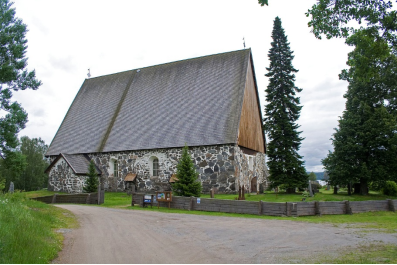
St. Mary's Church in Sastamala is a greystone church built in the late 15th century in Kastu, Sastamal, which is of great national traditional value. It was consecrated in a medieval manner to the Virgin Mary. There is a sacristy on the north side of the stone-roofed stone church. The window openings at the west end of the frame room are original, the other opening is either masonry closed or opened later. The barrel-vaulted church hall has a rare painted floor. The church no longer hosts regular services, but it serves as Finland's road church during the summer, and baptism and consecration events are held there occasionally. Sastamala Gregoriana is an annual music event in the church.
The church is located about eight kilometers from the center of Sastamala in Vammala and about two kilometers from regional road 249, where there is a guide to the church.
There have been as many birth stories of Sastamala Church as there have been narrators. Even recent studies have still not opened up the early stages of the Church, but some previous claims may have been refuted. The parish is old in Finnish, as the earliest document record about the parish is from 1328, and it can be concluded from the tax system that it was born sometime in the late 13th century. Sastamala is mentioned in the legend of St. Henry of the 13th century, which tells of the events of the 1150s.
At its largest, Sastamala covered the whole of North Satakunta and Karku was the center of the region. According to some traditional information, Sastamala Church has visited e.g. Vesilahti, Pirkkala, Lempäälä, Kangasala, Parkano and Merikarvia, even Keuruu, Kauhajoki, Seinäjoki and Kuortane. However, church visits by the most distant residents were rare. When independent parishes were formed in the areas, visits to Sastamala Church decreased.
https://fi.wikipedia.org/wiki/Sastamalan_kirkko
2. Rautavesi Lake
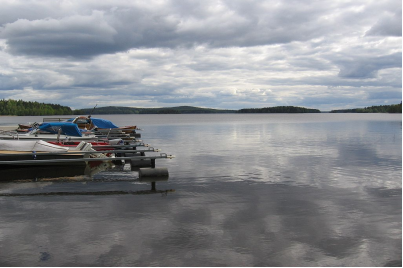
Rautavesi belongs to an almost unified lake complex, where Liekovesi, Rautavesi, Kulovesi and the archipelago between the latter two form the Iso-Kulovesi entity. Liekovesi below Rautavesi is considered to belong to Rautavesi and there is a separate Kulovesi above Rautavesi. The water levels in the lake basins are almost at the same level, as they are regulated by the Hartolankoski Tyrvää power plant in the Liekovesi bone. The regulated level in Rautavesi may vary between 56.5 and 57.5 meters above sea level.
The lake covers an area of 3,028 hectares and is 18.3 kilometers long and 1 to 3 kilometers wide. The Kulovesi border is located in the archipelago separating the lakes, where the narrowest straits and the largest currents occur in the three narrows of Salonsaari and Isosaari. Downstream, Rautavesi ends in Vammaskoski, behind which Liekovesi flows to the Tyrvää power plant. The 112-kilometer-long Kokemäenjoki River originates from it. The most important sources of Rautavesi are the flows coming from Kulovesi through them. In addition to these, several ditches and rivers flow into Rautavesi, the characteristics of whose catchment areas are described in more detail in the Rautavesi area. Important inflow ditches include Toravanoja, Rautajoki, Heinijärvenoja, Lammentaanjoki, Koskenoja, Nohkuanoja, Uitonoja and Ekojoki. The theoretical mean residence time of the lake water is 14 days.
The shoreline of the lake is 112 kilometers long and the shore is mainly moraine - and rock - based forest terrain. The area is heavily cultivated and all clay or loam soils are cultivated. The lake thus has a lot of farms and other fixed settlements, but there are also a lot of holiday homes.
Rautavesi's cultural landscape is one of Finland's national landscapes designated by the Ministry of the Environment. There are several churches around the lake, of which up to two, Sastamala Church and Tyrvää St. Olav's Church, or Tyrvää Old Church, are medieval stone churches. In addition to these, the landscape includes the Karku greystone church and the Tyrvää (new) church, which was also built in the 19th century. Around the lake, especially on the west side and around the southern end, there is an old settlement and field cultivation area where the handprint of countless generations is visible. Pirunvuori on the eastern shore of the lake is the highest mountain in the region, 151 meters above sea level. Ellivuori, next to it, has a ski center. The surroundings of the northern end of the lake in the area of the former municipality of Karku are otherwise quite rough. The Mäkinen lake landscape in the area attracted people who could afford to build large villas in the late 19th and early 20th centuries, even from the Helsinki region. There are still some villas in the area, such as Fulkkila villa south of Palviala.
https://fi.wikipedia.org/wiki/Rautavesi_(Sastamala)
3. St. Olaf’s Church
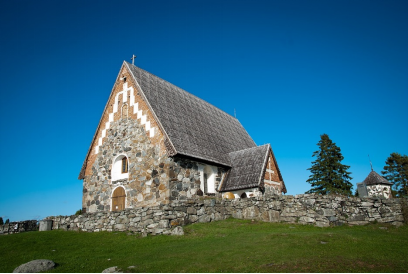
The Church of St. Olaf in Tyrva, or the Old Church in Tyrvää (Swedish: S: t Olofs kyrka i Tyrvis), is a late medieval greystone church built in Sastamala in Tyrvää between 1506 and 1516. It is located on Vanhankirkonniemi by Rautavesi in the village of Kalliala. The location of the church is one of Finland's national landscapes, and together with its surroundings it forms a nationally significant built cultural environment. The church is not in active use, but ceremonies and baptisms are held there, as well as services during the summer.
The Church of St. Olaf was originally built on an old place of worship, which may have previously housed two wooden churches. The church burned down in the early 17th century, when the interior had to be built from scratch. The church was used until the middle of the 19th century, but when Tyrvää Church was completed in 1855, it remained a desert church. St. Olaf's Church was repaired in the 20th century, and its shingle roof was repaired in the 1990s. Just three weeks after the work was completed in the fall of 1997, a burglar destroyed a church whose wooden parts and interiors were virtually completely destroyed. The church was rebuilt between 1997 and 2003, and reconstruction work received national attention. Mauri Kunnas' Koiramäki Christmas Churchraised more than FIM 1 million in the help fund. Artists Osmo Rauhala and Kuutti Lavonen painted the new interior.
The Church of St. Olaf dates from the late Gothic period and is considered to be designed by the master of Huittinen. The church is relatively small and has rich decoration at the ends. To the south of the church is the armory and to the north is the sacristy. The paintings destroyed in the arson were the handwriting of master painter Andreas Löfmark. Before the fire, the old artefacts had been transferred to the National Museum.
六、历史文化
1.历史
The mound's tomb with its swords, dating to the 300th century in Rammimäki, Vammala, is reminiscent of the prosperous armed burials of younger Roman times in coastal areas. It is also the only inland tomb corresponding to the coastal burial tradition at that time. During the Merovingian period, cemeteries became more common in the Sastamala area, which contributes to population growth and population density. The parish of Sastamala was a large parish belonging to the historical province of Satakunta.
The name Sastamala first appeared in the form Sastamall in a letter from King Birger Maununpoja from 1300 or 1303.
The new city of Sastamala was born at the beginning of 2009, when Vammala, Mouhijärvi and Äetsä merged. Earlier in 1973, Tyrvää and Karkku were connected to Vammala. The municipality of Äetsä had re- formed when Kiika and Keikyya merged in 1981. Suodenniemi joined Vammala in 2007 and Kiikoinen joined the new Sastamala in 2013.
The coat of arms of Sastamala is the coat of arms of the former municipality of Karku, designed by Lauri Ahlgrén.
2. 文化体育
Sastamala has a long tradition in literature and is considered the Finnish book capital. One of the biggest themed events is the Old Literature Days in the city center during the summer . In July 2011, the Finnish Book Museum Pukstaavi was also opened in Sastamala , which promotes Finnish book culture and reading. Pukstaavi is a national museum that tells the popular story of a Finnish book about cultural history and social significance. At the beginning of 2013, the city of Sastamala was declared the book capital of Finland. Since then, the city has chosen Kirjapää each year. The first Bookheads of the year are the authors Mauri Kunnas 2013 and Marko Vesterbacka 2014, Administrative Director Hannu Nikkilä2015 and bookstore Sirkka-Liisa "Samu" Leino 2016.
https://www.sastamala.fi
七、其他信息
The Days of Old Literature is an annual cultural event in Vammala , the current city of Sastamala in Pirkanmaa . The event will be held at the turn of June-July for two days. It was first held in 1985. The event has a special literary theme each year. It is estimated that about 15,000 people attend the event each year.
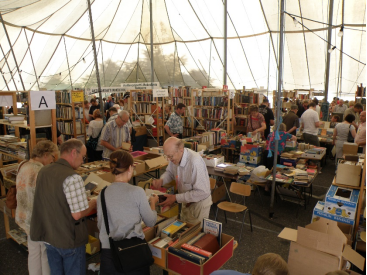
The program of the event consists of, among other things, seminars, exhibitions, book sales and a book auction. There are about 60 antique bookstores and more than 40 showrooms. There is also a program for children. A significant part of the program focuses on Sylvä School. At the Days of Old Literature , the Warelius Prize of the Finnish Nonfiction Writers' Association is presented annually and the Book Larva of the Year chosen by antique bookstores is announced.
The organizer of the event is the Finnish Old Literature Days Association, founded in 1986. The Chairman of the Board of the Association has been Ambassador Paul Gustafsson , Governor of the Bank of Finland and former Prime Minister Kalevi Sorsa , Professor Juhani Lokki and Professor and former Governor Jukka Sarjala . After the series died, Leena Majander-Reenpää, Publishing Director, was elected Chairman . The program committee responsible for the practical arrangements of the event will be chaired by author Panu Rajala .
八、联系方式
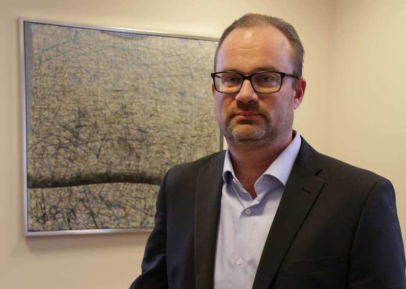
Mayor: Jarkko Malmberg
Telephone: 03 52 131
Email: Sastamala (at) sastamala.fi
https://www.sastamala.fi
